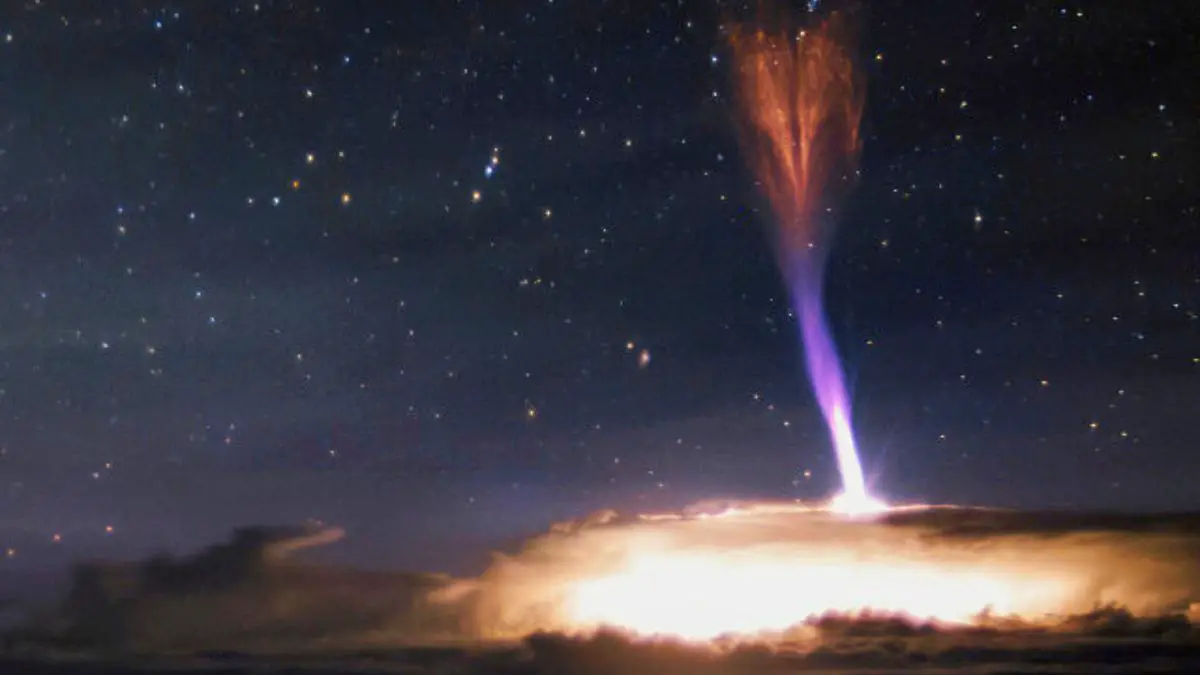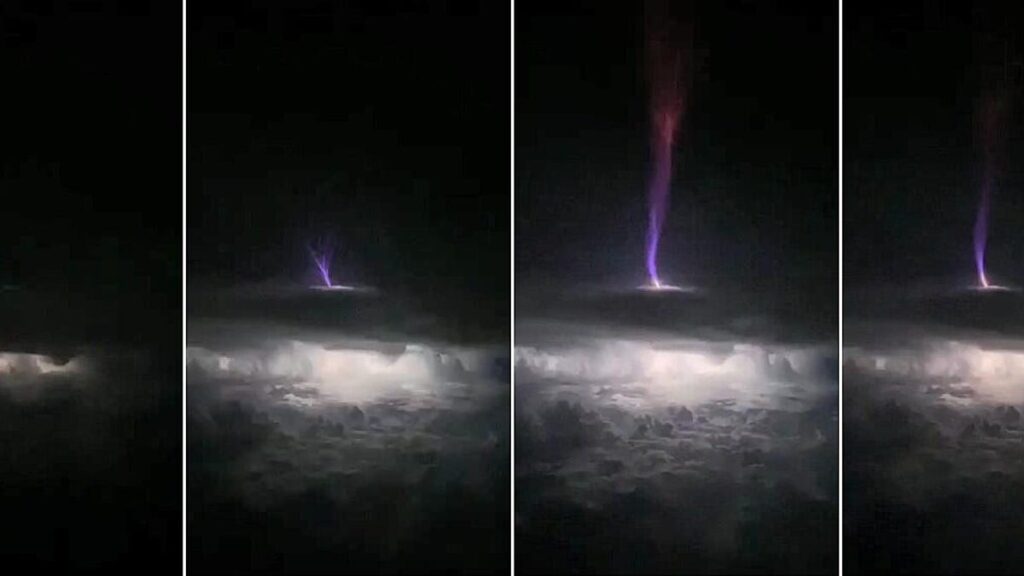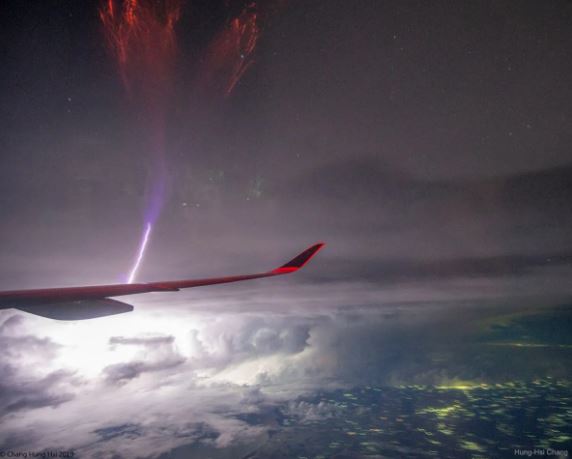Science & Tech
Scientists Puzzled By Supercharged Reverse Lightning Bolt So Massive It Reached The Edge Of Space
The mysterious “gigantic jet” lightning bolt was 100 times more ferocious than normal.

On May 14, 2018, scientists observed a stupendously massive “gigantic jet” lightning bolt that went in reverse, reaching the edge of space over a thunderstorm in Oklahoma.
The surge of electricity was so ferocious that it carried 100 times more electrical energy than the typical thunderstorm lightning strike and was twice as powerful as the next strongest ever recorded. This is bizarre.
This violent, reverse burst of electricity—a “gigantic jet” lightning bolt—is considered one of nature’s most mysterious atmospheric phenomena.
Now, scientists have produced a detailed 3D study of the most massive gigantic jet lightning bolt ever observed that rose 50 miles toward space above an Oklahoma thunderstorm in May 2018—and it reveals new information about the elusive atmospheric phenomenon.
“We were able to map this gigantic jet in three dimensions with really high-quality data,” said Levi Boggs, the paper’s corresponding author and a research scientist at the Georgia Tech Research Institute.
“We were able to see very high frequency sources above the cloud top, which had not been seen before with this level of detail. Using satellite and radar data, we were able to learn where the very hot leader portion of the discharge was located above the cloud.”
Simply put, gigantic jets are light beams that are produced together with normal lightning bolts but are propelled in the opposite direction.
However, they are much more powerful than their downward-facing cousins, occasionally even posing a hazard to spacecraft or other technologies floating in the orbit of our planet.
This one in particular was very powerful. With an estimated 300 coulombs of electrical charge—100 times greater than regular lightning bolts—it is thought to be the most potent of its kind by far.
Over the course of the previous two decades, researchers have identified a handful of these strange lightning bolts; nevertheless, the majority of these discoveries were the result of unintentional observations made by the general public.
The Universities Space Research Association, Texas Tech University, the University of New Hampshire, Politecnica de Catalunya, Duke University, the University of Oklahoma, NOAA’s National Severe Storms Laboratory, and the Los Alamos National Laboratory were among the numerous research teams that Boggs collaborated with.
Science Advances published a report on the study on August 3.
For now, there remain a lot of unresolved questions regarding gigantic jets due to the fact that observations of them are uncommon and generally happen accidentally—either by pilots or passengers who happen to spot them, or by ground observers using night-scanning cameras.
Which is why Oklahoma’s 2018 incident was so important.

By chance, a number of important scientific tools in the state, including satellite networks and a lightning-mapping system that looks for “very high frequency signals,” were nearby when this unprecedented event took place.
It was even captured on camera by a local citizen scientist using a low-light setting.

From all of this, a team of scientists gathered as much information as they could about the gigantic jet lightning bolt in an effort to create a thorough account of what transpired four years ago in the Oklahoma sky.
Estimates for the annual frequency of these bolts range from 1,000 to 50,000. They’ve been reported more often in tropical regions of the globe. However, the Oklahoma gigantic jet—twice as powerful as the next strongest one—wasn’t in a tropical region.
Typos, corrections and/or news tips? Email us at Contact@TheMindUnleashed.com
